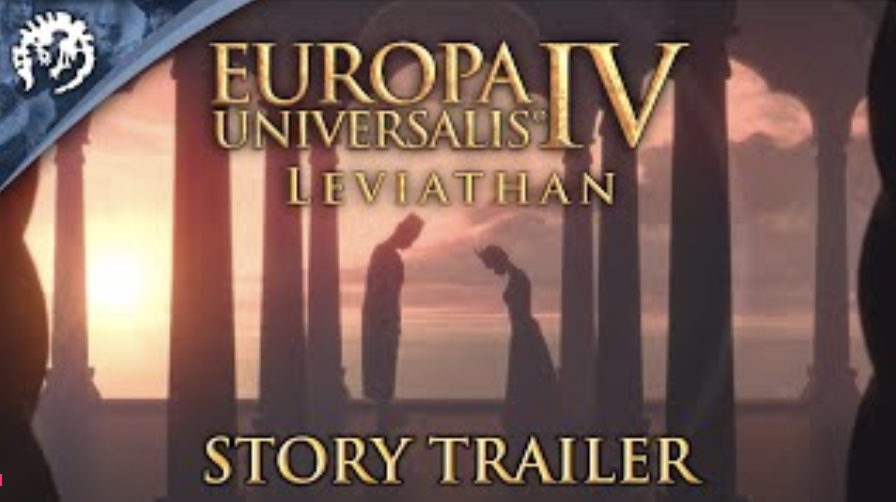Europa Universalis IV: Leviathan
Image Courtesy of Paradox Plaza
“We are mighty, but our strength comes not from conquest, but prosperity.” is the beginning words of the cinematic trailer for Europa Universalis IV: Leviathan.
May 26, 2021
Europa Universalis IV is a historical grand strategy game by Paradox Interactive, which just had its newest DLC, “Europa Universalis IV: Leviathan” released on April 27.
“Leviathan” is the latest in a long line of DLC’s (paid extra content for a video game) for EU4. EU4 takes place in what most historians would call the early modern period, 1444-1821. The game allows the players to play as any nation throughout the world during that period, and they can go to war, develop provinces, arrange royal marriages, colonize the new world, squash rebellions, and much, much more. While the game was initially released on Aug. 13, 2013, it has been continuously supported with updates and DLC.
“Leviathan” focuses on expanding the playstyle of playing “tall,” where the players grow more powerful by developing the provinces they already have rather than conquering more. The other major feature is monuments, which are prestigious buildings throughout the world (e.g. palace of Versailles or the Moai), which now, if specific requirements are met (e.g. countries’ religion is Catholic), are upgradeable with bonuses. Formerly some of these buildings could be seen on the map but were uninteractible.
“Leviathan” boasts changes to other areas of the game as well, such as the ability to specialize colonial nations, to curry favors rather than earning them and to automatically “carpet siege,” which means breaking up one’s troops into the smallest possible groups to siege as many provinces as possible.
The release of the DLC also coincides with a free update available to everyone. The update mainly focuses on adding more detail and flavor to the nations of southeast Asia and Oceania but has other features as well. These features include a reworked version of the mechanics of the North American natives, of new idea groups (for example, quantity ideas to increase one’s army size, economic ideas to become richer), of government types of theocracy, of natives and of steppe hordes, of balancing changes for naval combat and of changes to canals.
“Leviathan” retails for $19.99 and can be bought on Steam, Paradox’s website or other online web stores. Players can also gain access to the DLC by purchasing the EU4 subscription service for $4.99 a month. This also activates every other DLC for a person’s game, of which there are 17 expansions (new mechanics for the game) and nine content packs (purely cosmetic changes).
To test out the DLC, I decided to play as an arboignal nation in Australia, a continent which formerly had no playable countries at the start date before the new update.
I chose Palawa, a nation which at the beginning of the game controlled the entirety of an island off the coast of southern Australia, the island of Tasmania. I quickly gained land on the continent by conquering a fellow native to the north. For my first idea group, I chose expansion, which gave me colonists and colonizing bonuses. Following this, I slowly began to colonize the south of the continent and annex a few other aboriginals. I eventually bordered Eora, a long-time ally of mine, and I decided to attack.
While it was initially going splendid, I had beaten Eora’s army at their capital and my ally was besieging their capital, it quickly turned south after I attempted an ambitious attack on Eora’s ally’s capital. As I moved my army up north, Eora and their allies’ armies had merged and defended in an uncolonized jungle province. This gave harsh bonuses to my attacking army, so I lost and had to retreat my army back to the homeland. I figured that this was a minor setback as I still had enough manpower to fully replenish my army, and I had occupied Eora’s capital. I was proven wrong, however, after my enemies besieged my allies’ capital and took them out of the war. Seeing that I no longer had the numerical advantage, I signed a white peace.
In EU4, one can pass government reforms to upgrade or change governments. I had a brief stint as a migratory tribe before becoming a monarchy. During this time, I also decided to unlock Exploration ideas, which allowed me to begin exploring the lands beyond Australia. My most important discovery was of the Indonesian islands to the north of me. I began colonizing the island of New Guinea and other surrounding islands. I was careful not to attack any nations there, as my nation was technologically behind, and my armies would have been crushed in battle as a result.
My nation entered a golden age of wealth and peace as I colonized Indonesia and Australia. My diplomatic situation worsened, however, in the late 1500s because of two factors– the southern Indian state of Vijayanagar, who had begun to colonize in the region, and the Indonesian juggernaut of Majapahit, who desired many of the islands I had colonized.
I knew that if war broke out between either of these nations and myself I would be crushed. I appealed to Portugal, who I had first become acquainted with when I discovered an island they owned in the western Indian ocean, to ally with me to no avail. I requested to become a tributary state of Ming China, a relationship in which I would give them resources in exchange for protection, but they didn’t want me. Left with no other options, I tried to build up my military to ward off attackers. It did not work, and Majahpahit ended up declaring war in the early 1600s.
I knew that I would lose in any engagements as I was still technologically backward, so I kept my armies far and my navy in port. The only battles fought were between the invaders, and my small colonial armies put on provinces I was colonizing to quell native rebellions. I lost them all. I surrendered before much had become occupied as I had no hope of winning the war. In the peace deal, I ceded a few of my many islands in Indonesia and more importantly became a tributary state.
For the rest of the 1600s, I continued to colonize, and by the end of the century, I had an empire which stretched from Alaska to Tasmania; it was a paper tiger, however– one that, without the mighty Majahpahits protection, would have been conquered a long time ago.
After I had finished my first settlement in Siberia, I stopped colonizing to finally address the glaring issue in my nation– how behind I was technologically. The biggest reason for this was that I had failed to embrace any institutions (things like the printing press or the Renaissance, which mostly begin in Europe and spread overtime to the world. As a result, it makes it more expensive and nearly impossible to upgrade one’s tech if not embraced). With my monthly ducats (the currency in the game) at an all time high because I wasn’t paying maintenance for colonizing, I slowly acquired enough wealth to embrace all the institutions. I teched up to as high a level as I could and began bringing my far out armies to Australia while building new units.
To use my newfound power, I declared war on Terra Australis, Castile’s (a European nation on the Iberian peninsula) Australian colony. I was betting that Terra Australis would be easily crushed and that Castile wouldn’t bother to send any military forces all the way to the region. I ended up being half right. My armies had an overwhelming numerical advantage over the colonies’ armies and thus crushed them and occupied all their Australian territory.
I had ambitions of also stealing the part of New Zealand that Castile owned and their Pacific and Indonesian islands.To accomplish this, I engaged my seemingly powerful fleet against the smaller Castilian one and was promptly shredded to bits due to the technology difference and their navy being composed of more heavy ships (the most powerful ships in naval combat). Even my flagship “The Jewel of Indonesia” was sunk. I used my remaining ducats to build tons of heavy ships to rebuild my shattered navy. My improved navy then transported my troops to occupy New Zealand and other islands Castile owned. Eventually I came across an island with a garrison. Despite my numerical advantage, I lost. While I was trying to land, again the mighty Castilian navy engaged mine, and I lost, ending any hope of me making any more gains. Seeing that I would now be on an unwinnable defensive, I made peace. While I did technically “win” the war as they ceded a small amount of territory and paid ducats and development, it was a hollow victory, a war only won because the enemy simply didn’t want to waste resources and time squashing me.
This ended my first campaign of Europa Universalis IV with “Leviathan.” It was one with a compelling narrative and setting but wasn’t actually terribly fun to play. I spent so much of the game running it at the highest speed just waiting for something to happen. My nation could only expand by colonizing, which isn’t very fun to do. I would have loved to conquer, but my country was too surrounded by enemies and behind in technology to even consider declaring war. These problems are mostly EU4’s as a whole, though, and can’t be attributed just to “Leviathan.” That is not to say that Leviathan doesn’t have its fair share of problems, however.
The first of these is with the monuments. They feel unbalanced and without impact on the game. In all of Africa and South America, there are only three monuments, while in just the British Isles, there are two. While Africa and South America are a lot less played than England, they certainly shouldn’t have that few monuments. Some monuments have super specific requirements (e.g. state religion is Catholic) to get bonuses while others have no requirements to speak of. Some monument bonuses are also far superior to others. Finally, they just boil down to a set of bonuses, which don’t affect the game as much as I would like.
In regards to the features added by “Leviathan” to the “tall” playstyle, I feel they are useful if one plays that way, but utterly useless if one does not. While the act of playing “tall” is popular among the community, it is the minority rather than the majority. Overall, if one doesn’t play “tall,” these features don’t add much.
The new nations, flavor and detail in Southeast Asia, Oceania and the Pacific are wonderful additions to an area of the world formerly pretty barren and underdeveloped. Players get nearly all of that from the free update, however, so it isn’t really a good part of “Leviathan” as it is of the update. These areas, especially Australia and Hawaii, have a very different environment compared to nearly every other area in the world, so it is really nice to finally see them expanded upon.
Some smaller features added are the ability to specialize colonial nations to give extra trade, military or self-government bonuses, curry favors, automatically “carpet siege” and have more generals and admirals without penalties. Specializing colonial nations is a great way to have more control over one’s empire and reap more specific rewards from one’s colonies. Currying favors with other nations through one’s diplomats is a great feature because if a player has rather peaceful but powerful allies, the player doesn’t have to wait years for them to declare a war and call the player in so the player can earn favors with them.
Being able to set one’s troops to automatically carpet siege is a godsend. Formerly, a player could only have a very limited number of generals and admirals without taking penalties, which led to one having to focus on either an army or navy, never both. With the new amount of generals and admirals allowed, players are finally able to focus on both. Importantly however, the two features I would say are now essential to the game, curry favors and extra admiral and general slots, are available from the free update. While the other features mentioned here are nice, they certainly aren’t game-changing like the others.
The biggest issue with “Leviathan” and the update are the glitches in the game as a result of both. I was doing a campaign as Naples before “Leviathan” came out, and when I tried to load the world in and select my country to continue with, I encountered the now infamous error of no nations at all appearing in the world.
While Paradox has updated the game to fix some of the issues, the game has yet to truly recover. I played my Palawa campaign weeks after the DLC and update was released, and even then, the game crashed once, occasionally stuttering while I was playing, and once put a number in the auto-generated name of my admiral. Overall, the game became nearly unplayable after the release because there were just so many bugs and glitches. It is simply disappointing to see Paradox release a buggy and clearly unfinished version of the update and DLC rather than delay the launch.
In EU4, there are three DLC, which are widely agreed to be necessary to truly play the game, “Art of War,” “Rights of Man” and “Common Sense.” These DLCs all have features which are essential to the game, but “Leviathan’s” features are nowhere near as crucial as these. While it does have some now crucial features for specific playstyles, I wouldn’t say any features it adds are vital to every playstyle or region. At release, “Leviathan” is significantly worse than previous DLCs.
Overall, then, I would rate “Europa Universalis IV: Leviathan” a 6/10. Taking away all the features and detail added by the update, “EU4: Leviathan” is a glitchy and buggy mess, which adds features that are either good but only applicable for certain playstyles or simply bad, such as monuments. It is nowhere near worth $19.99.






